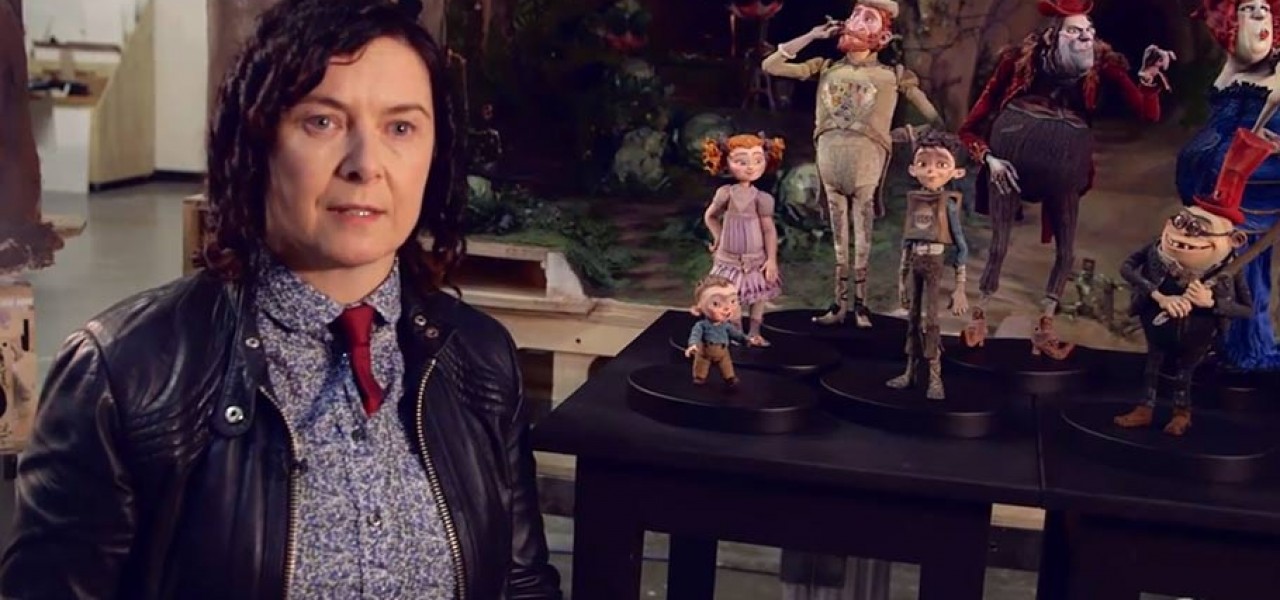
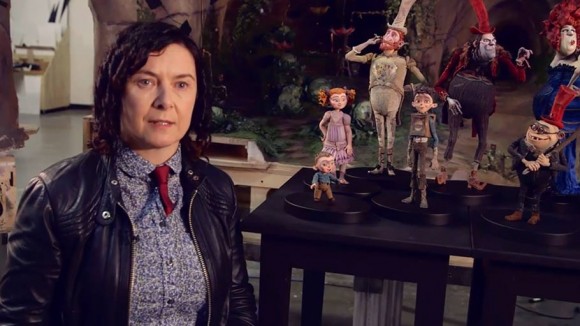
The Challenges of Designing Tiny Costumes for “The Boxtrolls”
It wouldn’t be wrong to describe the style of Laika’s upcoming stop motion film The Boxtrolls as a pan-European mash-up of Victorian eclecticism, steampunk, and German Expressionism. The film’s setting is an 18th century English town called Cheesebridge, where its citizens live under the rule of the upper crust council The White Hats by day and the exterminator crew The Red Hats by night. To illustrate the bigotry and corruption that serves as the bedrock of the city, a torqued and distorted look has been infused into not only the architecture and props, but the costumes as well.
“A lot of the linework in these costumes is slightly crooked,” says Deborah Cook, the film’s costume designer. “It comes from the original concept illustrations for the film. The line work is kind of wiggly and we just brought that through to combine everything into our own unique look for Cheesebridge.”
Cook, who has made a living designing costumes for stop motion films like ParaNorman, Fantastic Mr. Fox and Corpse Bride, works with the production designer, character designer and directors to develop the film’s costumes. During Cartoon Brew’s visit to The Boxtrolls set earlier this year, she walked us through her research process and talked about some of the unique challenges entailed in making costumes for tiny stop motion puppets.
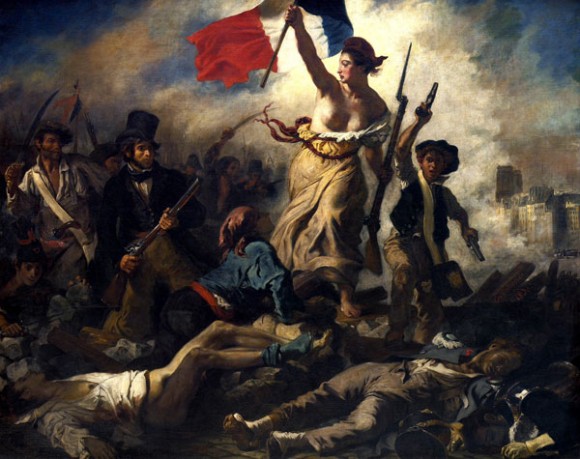
To get “a vibe” for the colors used in an era, Cook begins by looking at art from the time period. The color palette for The Boxtrolls costumes came from Delacroix’s 1830 painting Liberty Leading the People. “It’s just got little bits of turquoise, ochre, and different shades of yellow and brown. And the touches of token red is where the Red Hats came in.”
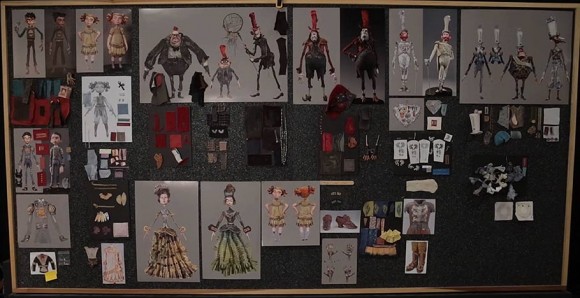
“We wanted some authenticity to the era so we’ve used some velvets and chiffons and things, but we back them in something [else],” Cook continues. “We use the properties of two fabrics.” As an example, she refers to a puppet of the film’s protagonist Eggs. “[His] pants have got a non-stretch suiting on the top, but it’s backed with Lycra.”
In terms of construction, some of the sewing on the surface is done with machines, but the costumes are always fitted onto the puppets by hand. “So even though there might be duplicate [puppets] of Eggs, each one has got its own little idiosyncratic shape,” says Cook. “It might only be a few millimeters out here or there, but it’s a big difference [in stop motion]. If you did that all by machine and tried to fit it, each puppet would look so different, so you really have to line it up by eye and fit it by hand.”
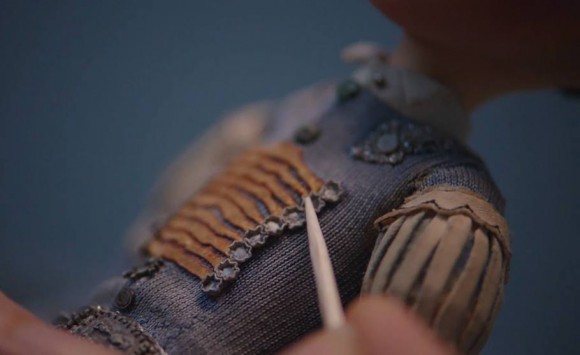
While the crooked line work in the costumes may have been introduced to complement the character’s surroundings, it also served a functional purpose. “We put [the lines] in places where the pants needed to stretch so that when [the character’s] not moving those lines are closer together and when he moves it gives him the stretch that he needs. It really helps the animators if the character needs to kneel down so he’s got a lot of lines around his knees and up around his butt. Another thing we do in the costume [is] we line the seams up so everything’s got several purposes. They also need to pass over the puppet’s access points so [the animators] are not twisting the costumes around or impairing movement.”

For Boxtrolls, Cook also did intensive research on military and gang clothing. This was particularly a great deal of inspiration for The White and Red Hats. “For the White Hats, it’s kind of a distilled [military] presence—lots of medals and sashes. Lord Portley-Rind (the leader of the White Hats) looks militaristic; he’s got his plate on the front, and he’s got his tails, top hat and feather plume.” Gang clothing inspired the Red Hats, especially the ways in which individuals customized their clothing and the cues they take from upper-class clothing. “It still denotes them as a kind of gang or as a recruited party of some kind, but they’ve customized their own jackets.”
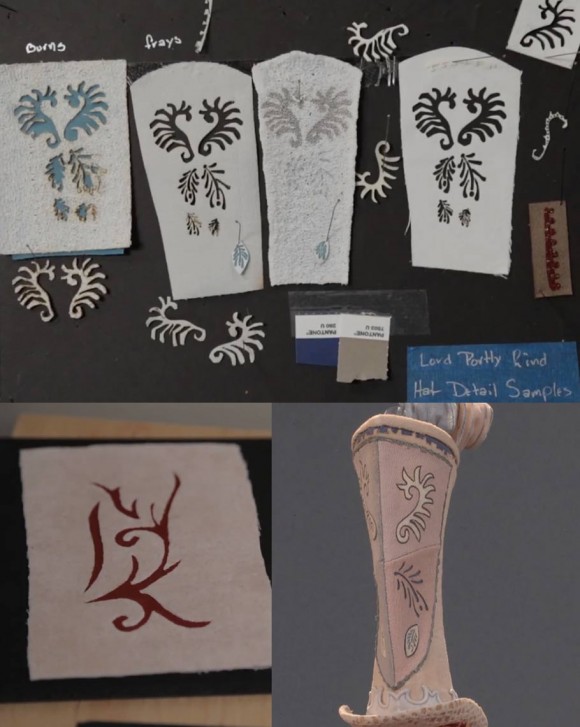
When working with such small subjects, scale is always a concern. If a character is supposed to be wearing denim, you cannot use the actual fabric, because once it is blown up to full size on the screen, the scale of the fabric’s weave will be incorrect. Laika uses laser etching to create everything from pressed velvets and lace to small pieces of costume hardware, like buttons. “You can program just how far down [the laser] goes down to the minutest, not-seen-by-the-eye measurement. I draw the [buttons] out and then they’re reduced in size and laser-etched. Then, when you blow them up on the screen, you can see all the detail in them.”
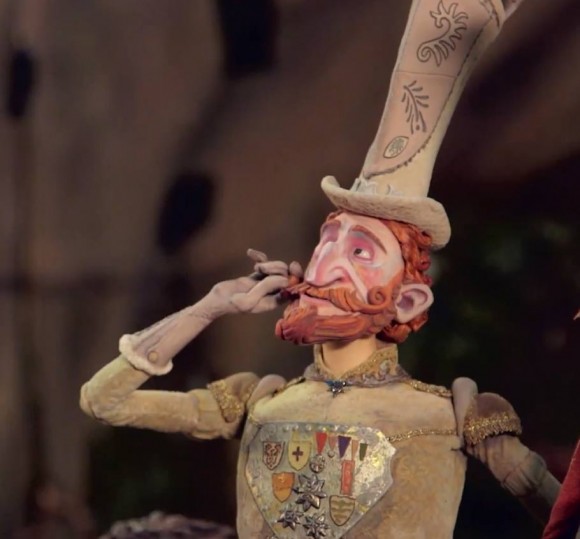
Boxtrolls opens in theaters tomorrow. For a closer look at the film’s costume designs, wath the video below:


